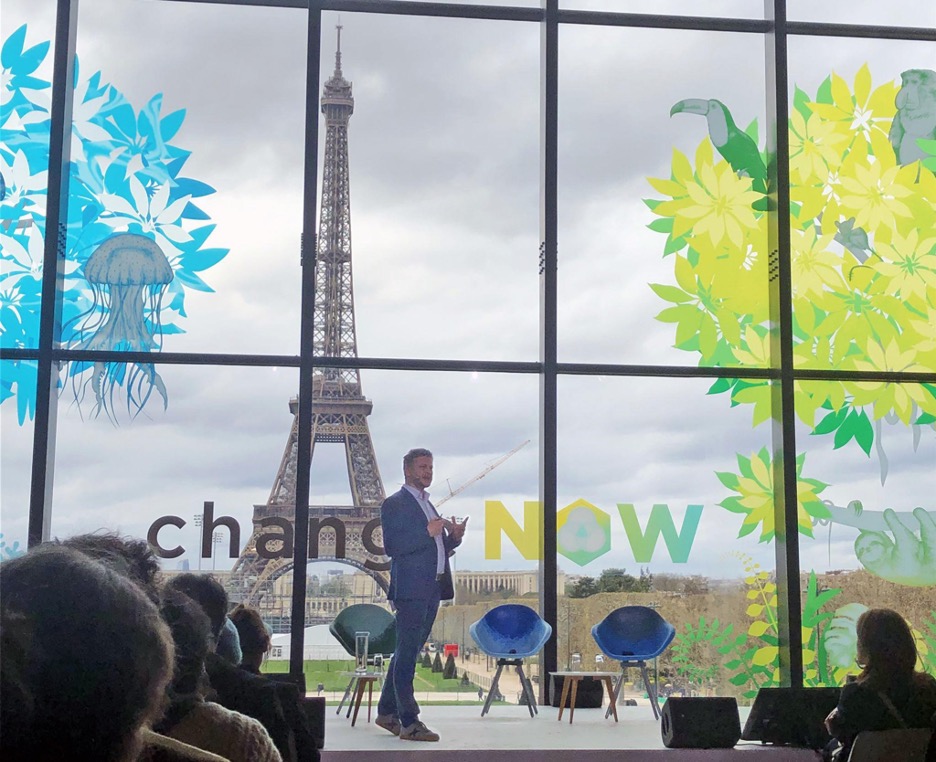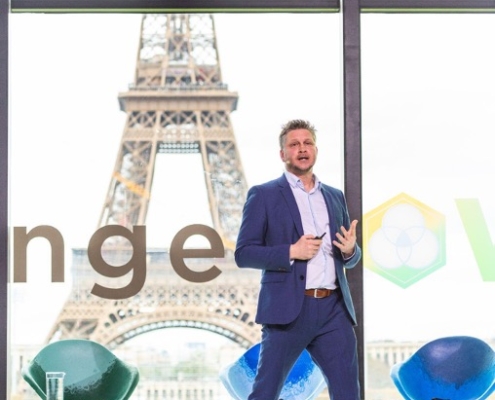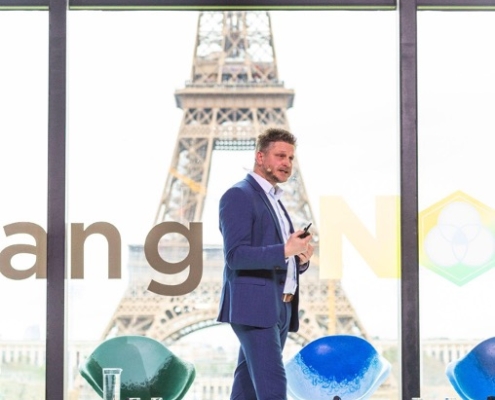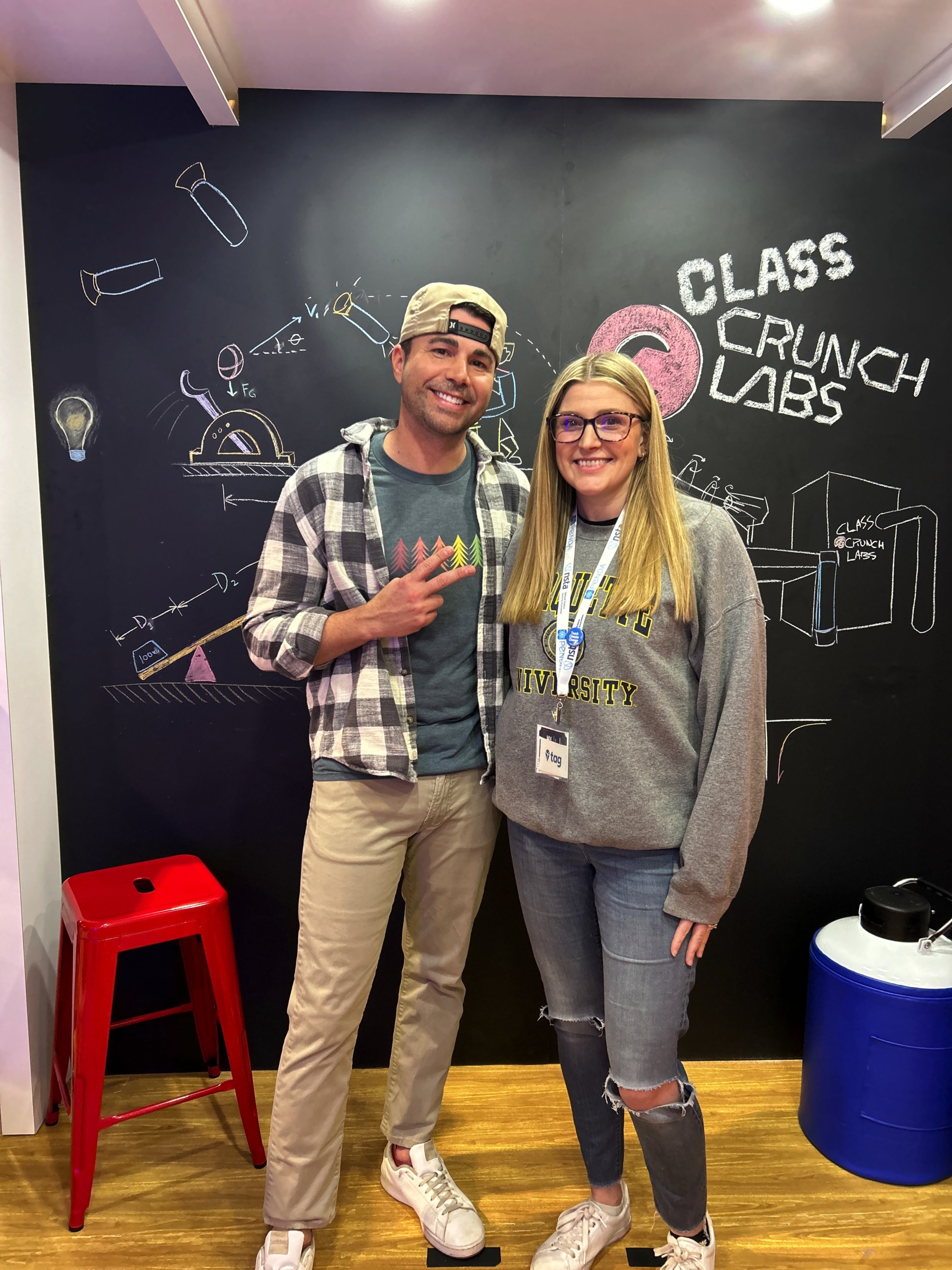ChangeNOW: The Power of Climate Action Education
The ChangeNOW Summit in Paris is the largest event of solutions for the planet. Koen Timmers, Co-founder of TAG, was asked to do the keynote for the climate education slot at the Eiffel Stage. Here, he shares his reflections.
Recently, a dear friend wrote to me that he didn’t want to know me anymore. It was a smack in my face. Apparently he’s one of the climate deniers. In the climate landscape, there’s no black and white. On one side of the spectrum, there may be people ready to throw a new portion of soup to the Mona Lisa. And, on the other side, there are trolls who drop a crazy amount of messages on Twitter claiming climate change is a hoax. In between– a lot of different personas: those who don’t know, who don’t care, who do care but mostly find it’s industry’s responsibility.
We need to have all people on the same page.
TAG believes for thàt we need people to realize it’s not only the government who needs to take action because we all have an individual responsibility as well, for which we need to change our behavior. Climate education is one of the crucial components.
Research
Here’s some good news: more than 80% of all teachers and parents are open to climate education. And students turn out to have lots of impact on their parents, too. At school, they learn but at home théy are the ones educating their parents about more sustainable lifestyles. A first sign that climate education has the potential to reach beyond the individual learner.
Furthermore, research confirms that three elements need to be in balance in order to offer quality education in sustainability: head, heart, and hands. Meaning that people need to be knowledgeable, that emotions need to be involved, and they need to be empowered to take action.
Here are two scenarios:
1: A student knows every single detail about climate but has no emotions or actions involved.: That’s not going to work – because they believe technology is going to solve the matter.
2: A student plants trees but does not know about the climate emergency.
That’s not going to work either and… that feels like child labour :-)
This is why TAG felt we needed to start talking about climate action education rather than climate change education.
A project to bring change
TAG decided to launch the Climate Action Project making sure that youth learn about climate change and teachers teach about the climate emergency. Because climate change is a global threat, we want to have youth represented on all continents.
The interesting part about the climate emergency is that the causes are pretty much the same in different countries but the effects can be very different.
Students in Florida may suffer from the hurricanes, while Australian students struggle with bushfires, and students in Sierra Leone with floods. Uniting all of the teachers and students in an online platform allows them to learn about climate and come up with solutions—this is very powerful.
But we wanted to empower them to do more. They also had to be able to be creative, come up with potential solutions, think critically, and be able to work together with their global peers. Because those green skills will make a difference in an era controlled by AI.
It was amazing to see what was happening. There was a real buzz on 2 different levels.
We had teachers exchanging ideas, creating their own activities and being surprised about their students’ level of engagement. At the same time students were taking positive actions and coming up with amazing ideas and solutions.
Students were drawing and crafting in USA; they composed songs and danced in Nigeria; they invited parents to their classroom in Belgium, created a garden at the school’s rooftop in China, did virtual interactions with peers in Kenya, designed a video game in Tunisia, set up a school radio broadcasting about sustainability in Colombia and made a mural in Portugal so that they would be reminded about their actions for climate every single day.
We were impressed.
It was also truly inspiring to see that while we gave all teachers the same guidelines, they all came with very different outcomes – different actions. An indication that climate education works for all topics, all student ages.
In Malawi. a teacher started to plant trees with his students to save a lake. They are on a mission to plant 60 million trees. In Ireland, the students noticed that there is no consistent logo for recycling. They invited their Minister for Climate Change and designed a new one which is now being used on every article nationally. They received a letter from their president to congratulate them on their efforts.
In Argentina, a teacher found out that you can create bioplastics with milk and vinegar. Resources which are broadly available. Now that is amazing because it allows students to create anything they want. Even LEGO minifigures. But it becomes really inspiring when the teacher shares the recipe in a network so that other teachers globally can replicate.
And in Portugal, a teacher made small solar lights which only cost 1 euro. During daytime the light charges, during night time it gives light. It gives students insights into the importance of solar energy. But frankly for us… it’s a small gadget which we can use in our garden.
But then magic happened.
We were approached by TJ – a Hollywood actor – and, he told us that he absolutely loves the project and would like to be involved. And then, he offered to bring 200 of those solar lights to the slums in Kenya. Meaning the Portuguese students not only learned about climate change, they also came up with their solution and directly changed the lives of some of their less-privileged peers.
But the project was not only about coming up with the coolest pieces of technology. During the project the students in Sierra Leone had floods which destroyed their teachers house. They decided to record a video in which they shared what was happening. And that video was watched by their peers in all continents. That is how we bring empathy in the classroom.
And because of the project, we got some extraordinary opportunities. Someone at NASA reached out to me and requested to set up a meeting. I still remember that when I was having a call with them I was thinking. OMG these guys must be 10 times as smart as I am. Turned out they are the ones in charge to research the Mars landing site for the Perseverance rover. While we were brainstorming about potential synergies they offered to send students’ messages of hope to their Perseverance rover on Mars.
We had public figures reaching out like Prince William, Jane Goodall, David Attenborough, and the Presidents of Colombia, Finland, Ireland and Seychelles sending a video message to our students. These special opportunities allow us to empower our students and give them a very enriching experience. One of those messages sounded like this.
Takeaways
We learned three things during the past years:
- Students can do a lot more than yelling and going on a strike. Don’t get me wrong: those strikes are important to call on governments – which we need to continue doing. But they – and us – also have the potential to bring actual change … NOW by coming up with positive actions and solutions. They just need to KNOW what is going wrong. Without bringing climate anxiety.
- But in order to organize climate education, curriculum is very important and teacher training is crucial. so, I’m looking forward to the debate afterwards where we’ll learn on how the topic is implemented in the curriculum.
- And finally… We learned that we made an impact. But did we change our students’ behavior and, with them, society’s mindset?
We noticed that different groups of people expect different kinds or impacts, too.
Governments are interested in the size of the network. Teachers are interested in pedagogy. Press is interested in anecdotes and stories of impact. But when I met with climate scientists, I always noticed that they are not as convinced as teachers are. They are merely interested in data. They want to see the numbers of the avoided, reduced, and removed amounts of carbon dioxide.
That is why – with these scientists – we have been working on an algorithm and an app called EarthProject.
Throughout the past years, I spoke with many people who are concerned about the climate emergency but don’t have a clue which specific actions they can take. So that’s the first feature you’ll find in the app. Tips about food, transport, lifestyle at home, and many more.
Once you take action, you’ll be able to see the exact amount of carbon you have avoided or reduced.
And, you can even work in teams meaning that one classroom (or office) can challenge the other. Thanks to the app we can see the amounts of carbon reduced per age category, per country, per category, because of the efforts taken by students as part of climate education.
Call to action
Now… I wonder… Do you know 3 specific things you can do today at home – or at the event – which are the first step to slow down or even reverse the climate emergency? The good news is that the app can be used by anyone: students, teachers, parents and you. So feel free to give it a try.
On the same mission
Requesting bombastic music as the end of this article is nearing…
🦗🦗
No bombastic music because honestly…climate education is always below the radar.
Apparently humankind prefers fancy and very expensive tools which will solve the climate crisis. But climate education is such a low hanging fruit. And if people’s mindset is not right, we will never get there. People will not buy expensive electric cars, equip their rooftops with solar panels, and stop wasting as much food if they don’t see the point. Also: we are setting deadlines in Europe for shifting to a more sustainable lifestyle with the green deal etc. But…
The thing is… the project united a big network of teachers and students who want to go forward. Being on the same mission, they started to appreciate each other despite the fact they live in different countries with different time zones, languages, and cultures. Some of them even became friends.
Climate change is a powerful way to have this talk, since we’re all involved.
Knowing that climate education strengthens people, we hope with all of our heart we can kick climate action education into curricula.
– Koen







